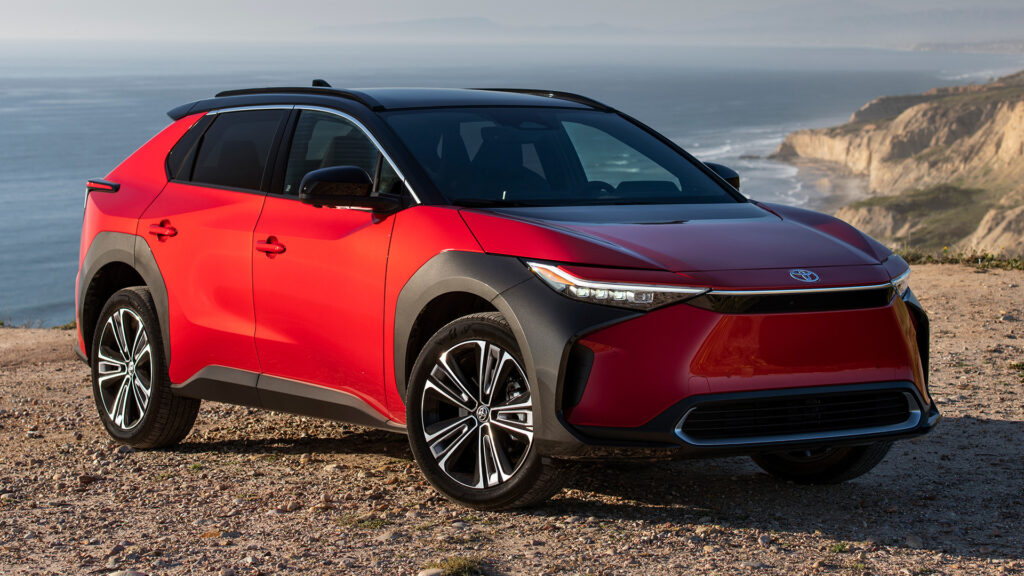
After years of inflation-fueled price increases, the past two years have given us the early hints of a revival of the (at least somewhat) affordable base-model car. Toyota is jumping on the bandwagon for 2025 in a big way, dropping the base price of the bZ4X by $6,000. Yep, six grand.
But here’s the thing: at just a hair under $40k after destination, it’s still not going to be cheap enough—and there’s really not much Toyota can do about it short of losing even more money on each unit it sells.
Why? Well, two reasons. For starters, the BZ4X is assembled overseas, making it ineligible for the $7,500 IRA tax credit. And second, because suddenly, the $35,000 EV segment actually exists. Thanks to the federal credit, you can snag quite a few domestically built EVs for less than $40,000—and virtually all of them offer more impressive electric credentials than Toyota’s compact effort. The new Chevy Equinox EV, for example, offers 20% more range, all-wheel drive, and a more impressive onboard tech suite for less money. Meanwhile, the Tesla Model X and Model Y come with a fully fleshed-out charging network and more range than either the Toyota or Chevy.
Of course, we can’t talk about those subsidies without pointing out that Trump II: Combustion Boogaloo may change the landscape of this segment dramatically, and while that sounds like bad news for any American-built models using federal subsidies as a crutch, that may not matter if the administration slaps more duties on imported cars. A hefty tariff will bury a money-losing import EV faster than you can say “Smoot-Hawley;” so far, Japan appears to be left out of the coming storm, but the landscape is evolving rapidly.
The bZ4X’s biggest shortcomings (range, odd interior choices) could be far more easily forgiven if it were cheaper. On paper, it competes far more closely with the Kia Niro and Hyundai Kona EVs than it does with any of the cars we mentioned above. In real life, it’s much bigger, drives better, and offers a far more modern EV experience, but none of those attributes will draw buyers into showrooms, especially when they’re already put off by the too-high price. Throw in Toyota’s corporate hedging toward gasoline-hybrid powertrains and the bZ4X starts to smell a bit like the Mirai.
Got a tip? Send it in: tips@thedrive.com


